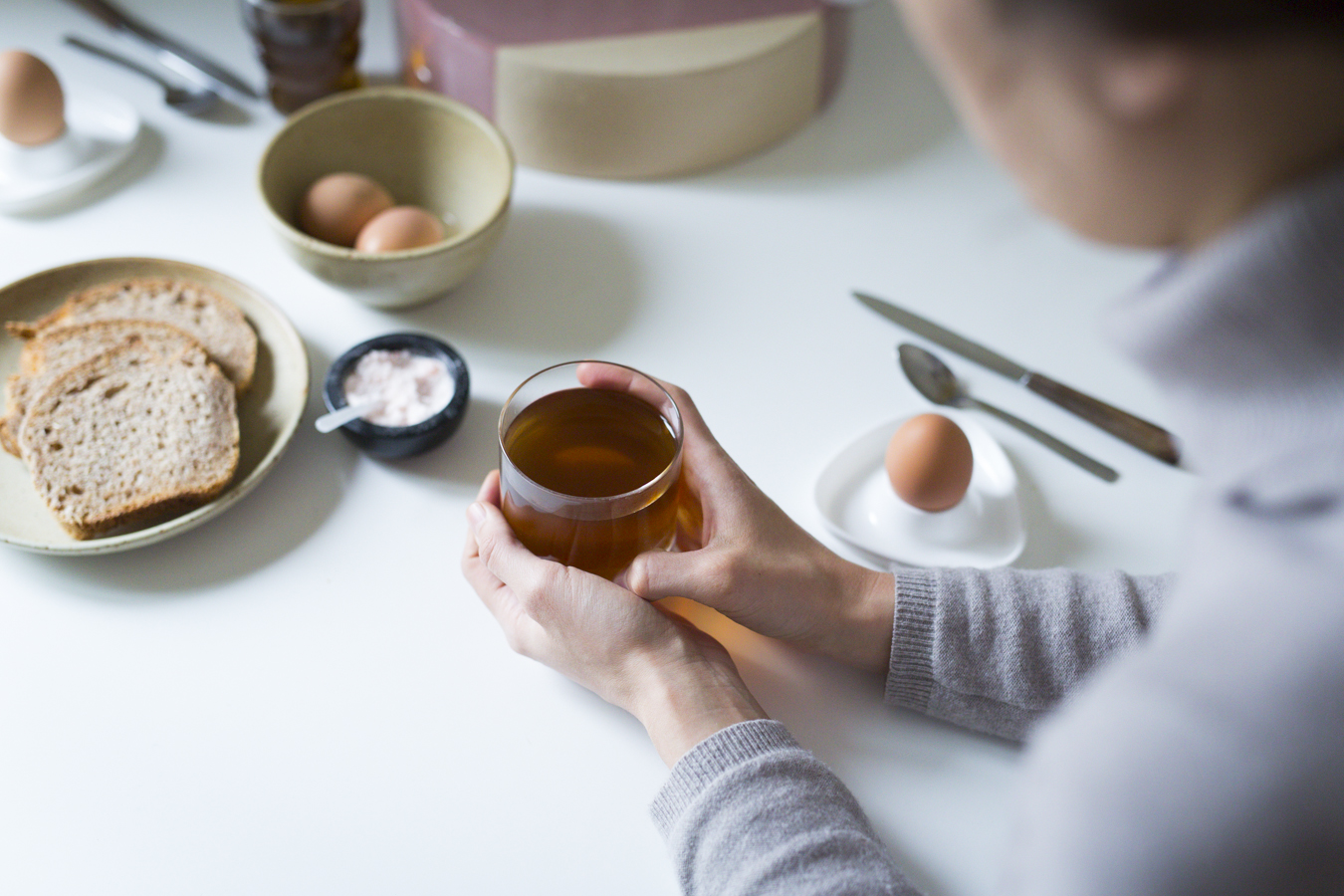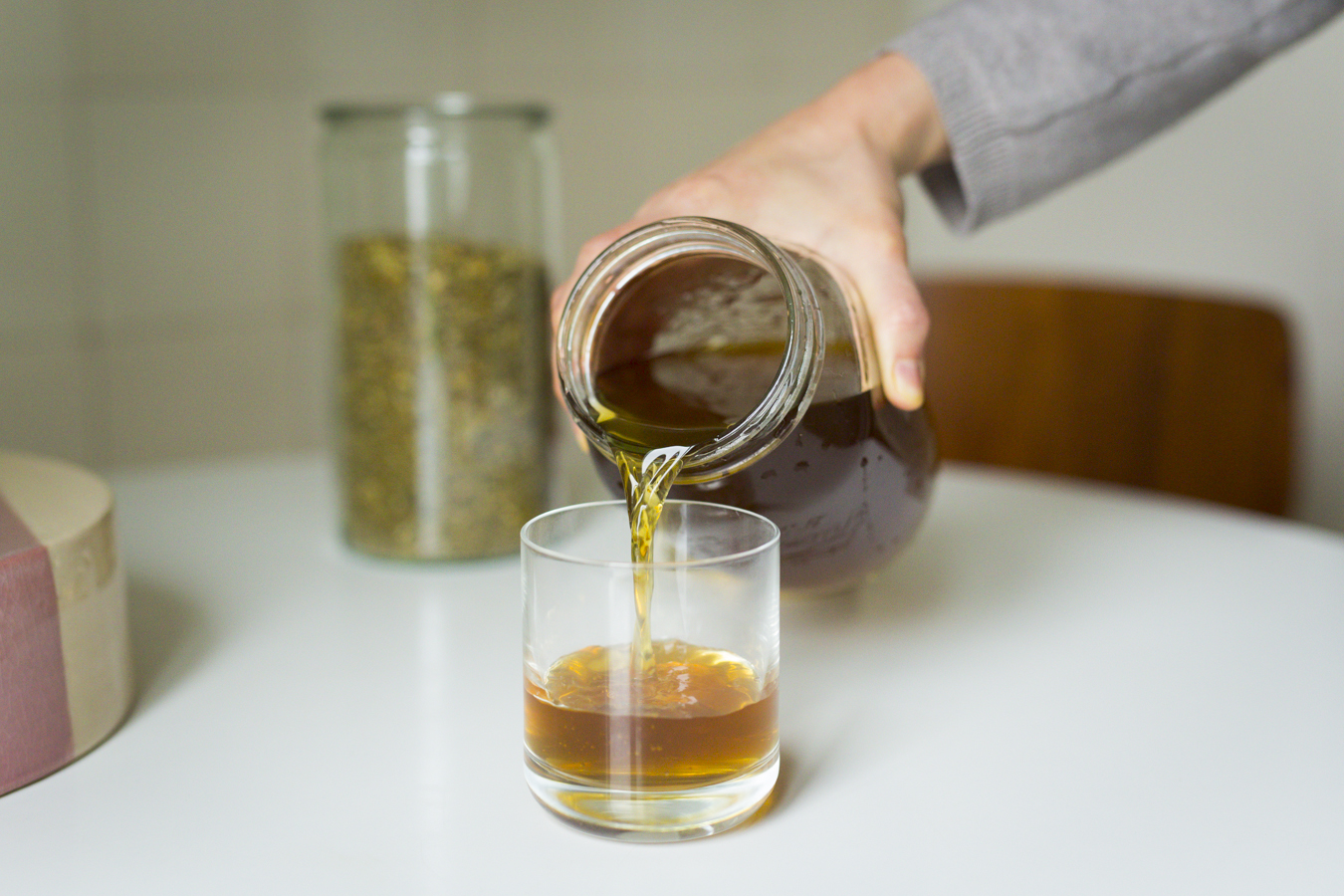Herbal medicine to me is individualized medicine. Medicine formulated specifically for you, medicine that sees you, all of you–all that’s whole, all that’s fractured–, that meets you, all of you, right where you are.
It’s why I tend to prefer the herbal approach to the pharmaceutical one. One pill formulated for the treatment of one symptom, or one set of symptoms, could never be effective for everyone; just as one diet, one exercise routine, one spiritual practice, one way of working, one way of loving will never be.
This isn’t to say that the pharmaceutical route is never the right one (sometimes it clearly is), it’s just to point to the truth that though we’re all pieced together by the same types of molecules, we’re all also deeply and tenderly individual, each endowed with our own particular strengths, our own unique tendencies toward balance, toward wellness, toward light.
All said, it’s funny that my introduction to Western herbalism, to nourishing herbal infusions, came from an herbalist who insistently pushes a sort of one-size-fits-all approach.
You may have heard of her. A dog-eared copy of her book Healing Wise might’ve found its way into your life: peeking out of your hippie friend’s macramé purse or on the shelf of your local food co-op or, more realistically these days, popping up on your instagram feed from that #greenwitch account you follow.
It’s an incredibly approachable introduction to herbalism and an empowering one–no matter what your experience or lack thereof with plants, you start to feel like, hey, this isn’t so hard, hey, maybe I can do this, too. (Pretty incredible! And the reason why I recommend this book in the library of this blog [and IRL, quite often, too].)
As you learn more about her approach, you quickly learn she really loves herbal infusions. She recommends drinking two liters of infusion daily, rotating through nettle, oatstraw, red clover, comfrey and linden each week. And you learn that she recommends this practice to everyone…period. And when I say everyone, period, I mean e-v-e-r-y-o-n-e, period.
If you’ve ever listened to one of her podcasts, you know what I’m talking about. Listeners call in for advice on treating various ailments–from chronic illness to heart dis-ease to eczema–and 10 times out of 10 her first question to them is whether or not they’re drinking nourishing herbal infusions.
No digging into how the ailment is manifesting for them, or whether they tend toward dryness or dampness, or if they even happen to enjoy the taste of nettles (because not everyone does!). No details, no nuance. Just one set of rules for all sorts of folk to follow.
Sound familiar?
#Nodisrespect, nourishing herbal infusions have been a major blessing in my life. But here’s the thing: they’re not for everyone. Or, even, not all of them are for everyone. This herbalist’s emphasis on this one healing practice often ends up mirroring the approach to medicine she is countering, which is too bad.
Because what’s been revealed to me, as I go deeper, is that the strength, the beauty of plant medicine lies in detail, in nuance, in an individualized approach. It’s why seeing an herbalist for the first time can be such a transformative experience. For perhaps the first time ever you’re given medicine that meets you where you are, as you are; medicine made specifically for You, with a capital Y.
This Fall, during a session with herbalist jim mcdonald, I was introduced to violet medicine. At the time, I was drinking nettle infusion daily. I’d been complaining about this stuck feeling in my sinuses, which tended to feel bone-dry and achy most days. “Have you thought about swapping nettle out for something else?”
I’d learned that nettle was drying, but I somehow hadn’t managed to link the two. Because here’s the other thing about one-size-fits-all ethoi: they are damn easy to believe in, whole-hog, because black-and-white is a heck of a lot easier to navigate than slippery grey.
I was drinking nettle because of its nutritive properties, to support myself during my recovery from a tick-borne illness. It didn’t cross my mind that there may be another herb with similar properties better suited to me, with my tendency toward dryness. That’s when jim introduced me to violet leaf.
Viola odorata, or violet, is one of those plants most of us haven’t ever really thought of as medicine. Chances are you can identify one, with its namesake-colored, circular petals and heart-shaped leaves. Maybe you’ve seen them in your aunt’s garden or sprinkled on top of a salad mix at a farmer’s market. It’s one of those plants–like rose–that hasn’t really received the same sort of wellness publicity that others have (looking at you turmeric).
Its leaves are nutritive, cooling, moistening, gently cleansing. The dried leaves look similar to oatstraw; they taste and smell like a milder version of nettle, tangy-sweet.
Violet leaf infusion is nourishing, high in minerals, especially magnesium and calcium. It’s cooling, easing frayed nerves, lubricating a nervous system that’s been running hot, that’s over-tired, burned-out. It’s moving, with an affinity toward the lympathic system, clearing stagnation, easing swollen, achy glands, an affinity toward breast tissues, helping to dissolve malignant and benign lumps. It’s moistening, salve for those with dry constitutions, those with a tendency toward eczema, constipation, sore throat, sore sinuses.
I’ve come to see it as a medicine for learning to be gentle with oneself, to self-soothe, to keep one’s cool.
I share this method of making violet leaf infusion with the hope that it offers one more option to you, as you find the right rituals and practices that see you, all of you, that meet you right where you are.
Violet Leaf Infusion
- 1 ounce violet leaf, dried
- Place violet leaf in sealable glass jar.
- Fill jar with boiling water. Let steep over night, or at least for 4 hours.
- Strain liquid from jar. Compost violet leaves. Refrigerate and drink within 48 hours.



Just recently had a cone biopsy of the cervix due to high grade dysplasia and the results were that the cells that were removed were precancerous but I do not have CANCER! Was so relieved to hear that. I hope all is well with you and that you are feeling better as well. I am sending you a big HUG and many 😘 kisses. Stay well!
Happy to hear you’re doing well MJ! Big hug to you and your family! Xoxox
I just wanted to take a minute to thank you for this post. I actually went to a one day workshop with that same person you mention… it was.. intense.. That person was verbally abusive to the apprentices. It was very uncomfortable and I wanted to take those young girls under my wing and tell them they didn’t need to take that kind of abuse.
Where I’m torn is that there was actually a lot of good information at that workshop and I do listen to the podcast, but I agree with you 100% that one size does NOT fit all. I found this post while searching for more information on Violet Leaf Infusion as I felt called to it… I don’t like comfrey (it’s a texture/aftertaste/bitterness) thing so I wanted to add one into my rotation.
It’s difficult because I *have* personally benefited from daily infusions but … well… yeah.
Hi Jeni!
Thanks so much for yr comment! Yes, I definitely appreciate a lot of the work that *that* particular herbalist does–but her approach is definitely not my cup of tea.
Here’s to finding plants that work with us in all of our individuality and loveliness!
Much love to you!
Susan Weed is autistic and communicates differently than the majority of the human population. I wouldn’t classify it as abuse.
I also listen to the podcast and don’t appreciate her approach but do appreciate learning more about herbs. I can’t get over her approach to cause and effect. Someone can say they get a reaction from something and she emphatically states that isn’t the cause, just because you did something before hand. Then she turns around and says, the herbal tinctures or infusions she recommends “cause” the positive results. To me, that is a double standard.
I found your post when searching for Violet leaf infusion. I just received mine and made my first violet leaf infusion today. I don’t really care for it, but I will try adding some peppermint or spearmint to help improve the flavor.
I also don’t believe all the medical advise she gives and worry about others listening and taking her advice. Yet I still listen to the podcast. lol